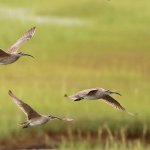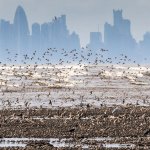Since 2016 the Western Hemisphere Shorebird Reserve Network (WHSRN) has been running a joint study with the National Audubon Society to understand shorebird usage of Central American shrimp farms. Understanding the role that shrimp farms play in conservation was the first challenge that arose when the Delta del Estero Real was designated as a WHSRN site, as it is surrounded by shrimp farms. The Gulf of Fonseca is shared by three countries – Honduras, Nicaragua, and El Salvador – and the WHSRN site is located in Nicaragua. The Gulf of Fonseca has 50,144 hectares granted to companies and cooperatives for shrimp production. A simultaneous tri-national count represents an opportunity to collect data that can be a snapshot of the concentrations of shorebirds using this productive system at the time of the survey.
The first count took place on 24 March 2021 in the Gulf of Fonseca shrimp farms, including all three countries that share the Gulf of Fonseca. A total of 32 volunteers making up nine teams (four in Honduras, four in Nicaragua and one in El Salvador) carried out the count, with participants not only from ornithological organizations, but also representatives of the shrimp farms, who joined in and showed their support for the initiative. In El Salvador the count was led by SalvaNATURA with the support of volunteer birdwatchers and guards from the Environment Ministry (Ministerio de Medio Ambiente – MARN), in Honduras by Aves Honduras (ASHO) and in Nicaragua by the Quetzalli group with the support of volunteers.
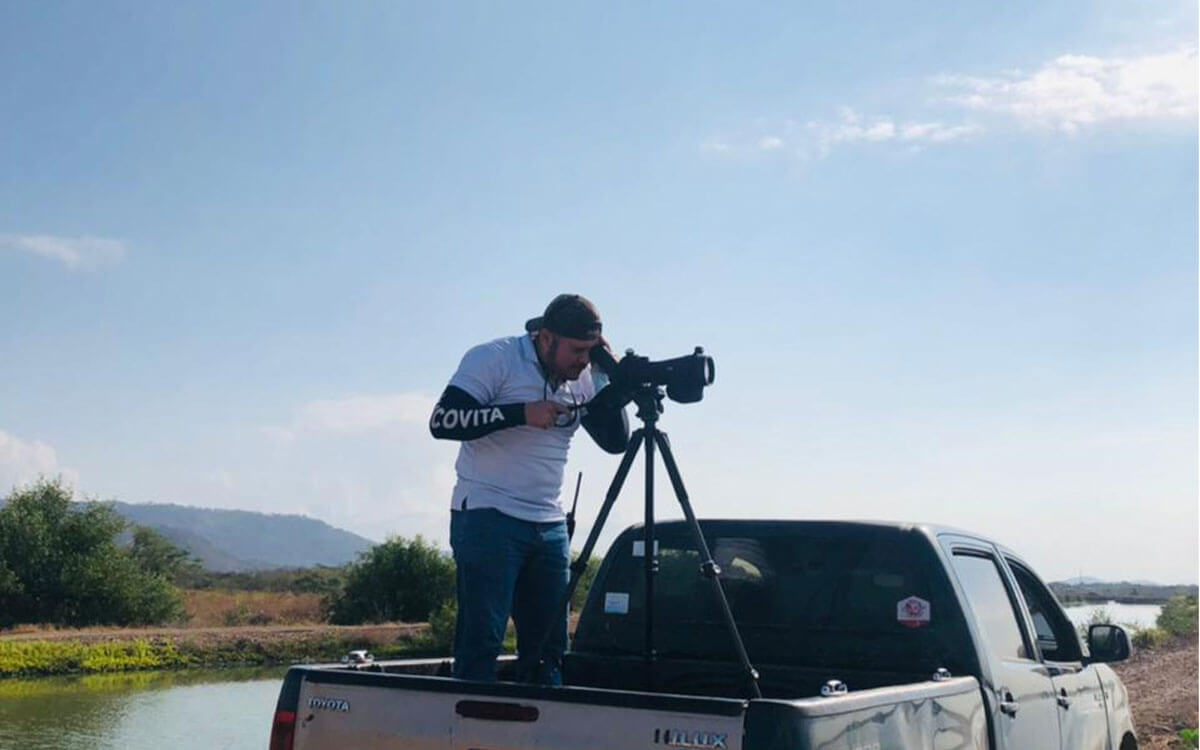
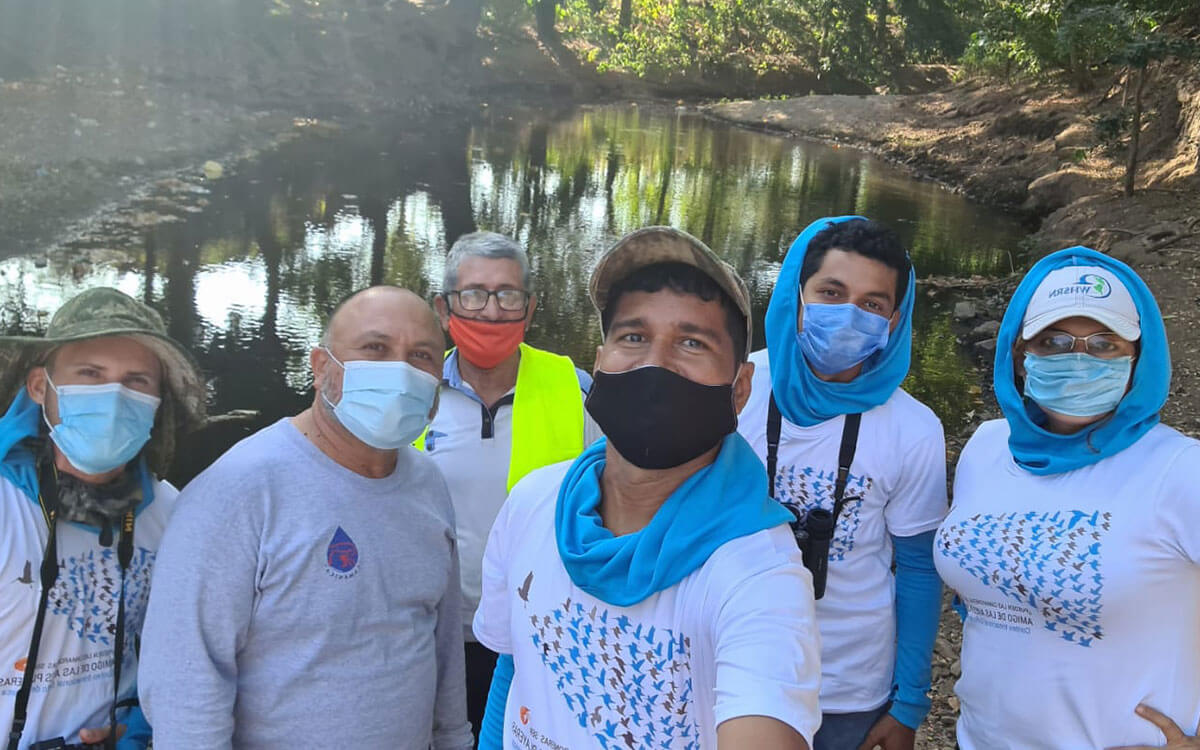
Left: Jose David Maradiaga from Granjas Marinas Sur (Honduras) supported and guided the field trip, in the photo observing with a telescope in sector 1 of the shrimp farm. Photo: Julia Salazar Perla. Right: Staff from Camanica – Pescanova, and volunteers of the counts in Nicaragua.
Since birds concentrate in the shrimp farms during high tides, it was ensured that the teams would count the birds between 6:30 a.m and 2:00 p.m. The highest point of the tide was at 11:17 a.m. Twenty shrimp farms were sampled, covering approximately 5,090 hectares and representing about 10% of the area dedicated to production. During the survey a total of 29,224 waterbirds of 65 waterbird species were counted. Of these, a total of 18,154 were shorebirds (62%) comprising 31 species. At the country level, Honduras counted 10,805 shorebirds of 24 species, Nicaragua 5,977 shorebirds of 17 species and El Salvador 1,372 shorebirds of 18 species. El Salvador was the country with the lowest sampled area during the count, as there is less shrimp farming infrastructure in that country.
Amongst the significant results are the high counts of Semipalmated Sandpiper (Calidris pusilla). The total of 9,584 individuals recorded represents 53% of the total of shorebirds recorded. Of these, 72% (6,973 individuals) were counted in Honduras and 27% (2,605 individuals) in Nicaragua, with the greatest concentrations in two shrimp farms (Granjas Marinas San Bernardo and Acuamar). The Black-necked Stilt (Himantopus mexicanus) was the second most abundant species with a more evenly spread distribution across the different sampled areas and a count of 2,765 individuals. Another species with important counts was the Whimbrel (Numenius phaeopus hudsonicus), with 1.25% of the biogeographic population, half of which were observed on the mudflats of the Bahía de la Unión (Union Bay) in El Salvador and counted on the way to the shrimp farm. The El Salvador team recorded the only 10 American Oystercatchers (Haematopus palliatus palliatus) of the count, one of which bore an orange ring with the code YL9, banded in June 2016 at Long Beach Island, New York. This team also observed the Double-striped Thick-knee (Burhinus bistriatus) nesting in remnant salt flats near the shrimp farms.
Amongst the waterbirds of interest are the Neotropical Cormorant (Phalacrocorax brasilianus) of which only 601 were observed and Gull-billed Tern (Gelochelidon nilotica) with 262 individuals observed (1% of the biogeographic population). These numbers would possibly increase as more farms near the intertidal mudflats are sampled.
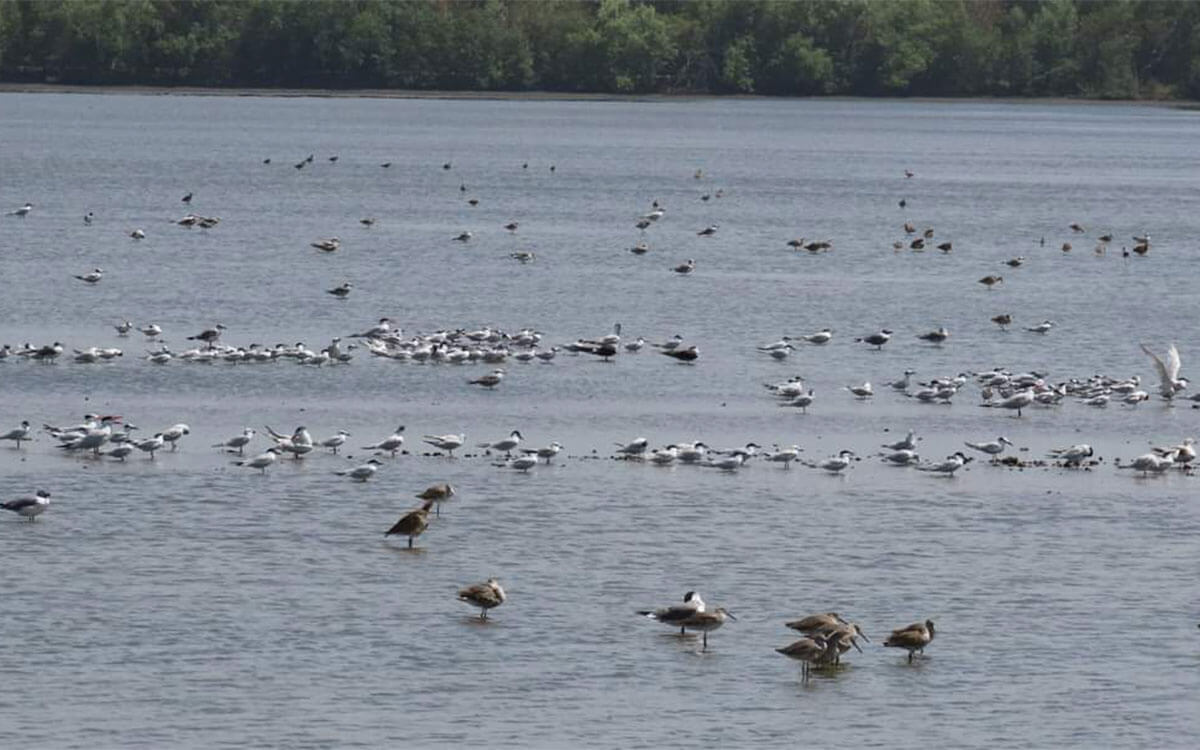
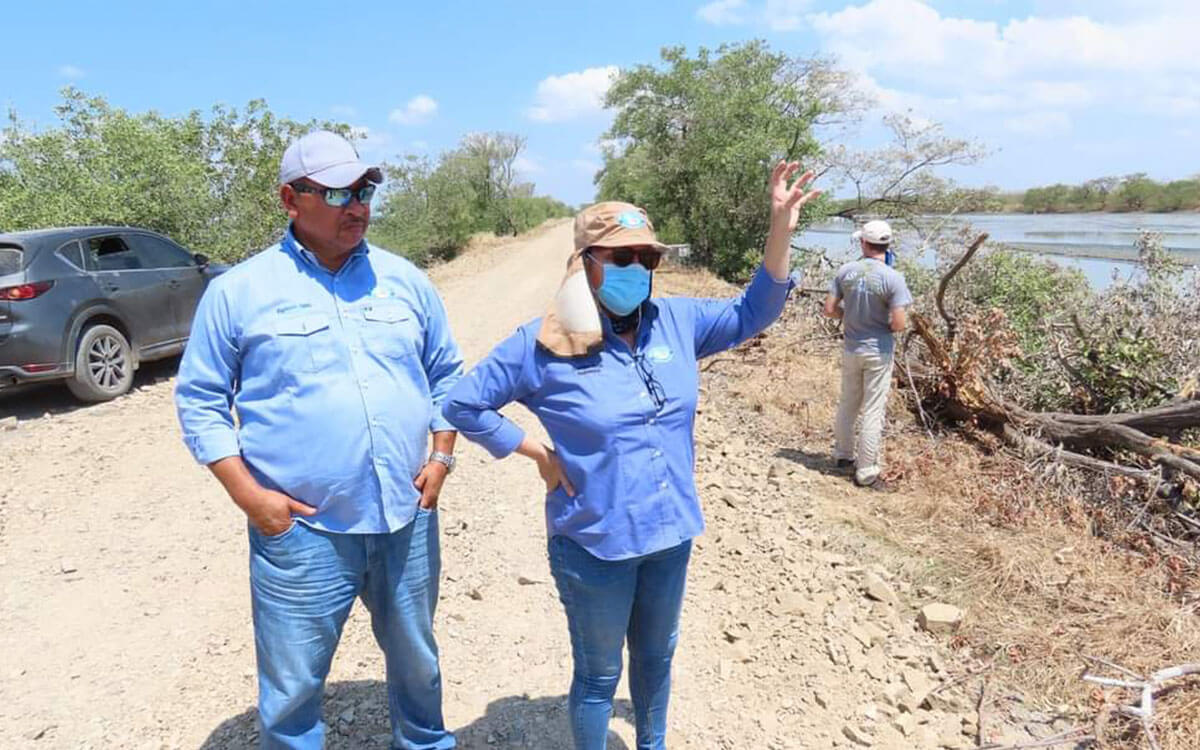
Left: Waterbirds at Granjas Marinas San Bernardo, Honduras. Right: Granjas Marinas Group staff accompanying the count. Photos: Oliver Komar.
Many shorebirds that have been wintering at the surveyed sites begin their migration north for the breeding season in March, and thus it is possible that many birds that are usually found in the survey area were already gone. We hope that in the future it will be possible to do more counts in other seasons and with more volunteers. In order to increase the percentage of the sampled area, more volunteers are needed to cover the high tide window, along with access to farms closer to the coastline
We thank the shrimp farmers who joined the First Tri-national Count in shrimp farms. Their contribution to improving our understanding of the importance of this production ecosystem is vital for the identification and piloting of Good Aquiculture Practices for the conservation of shorebirds. Thanks in Honduras to Grupo Granjas Marinas (Granjas marinas San Bernardo, CRIMASA, CADELPA, NAFCOSA) and Granjas Marinas del Sur. In Nicaragua to Grupo CAMANICA/PESCANOVA (Complejo AGRIMARSA I, II, III y dos Aguas), Camaronera Acuamar, Cooperativas Edgar Lang, Puerto Morazán and Playones de Catarina, and in El Salvador Brisas del Golfo, Isla de Rico and Los Cedros.
Cover Photo: Bahía San Lorenzo en el Golfo de Fonseca, Honduras. Photo: Julia Salazar.





